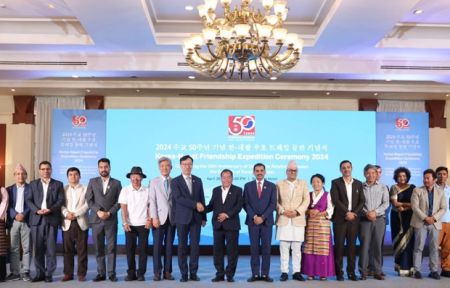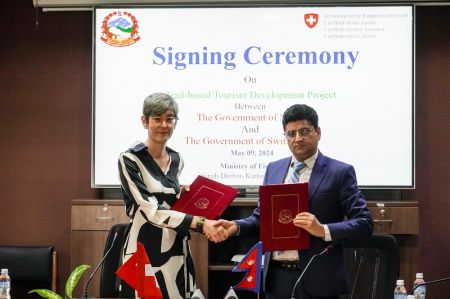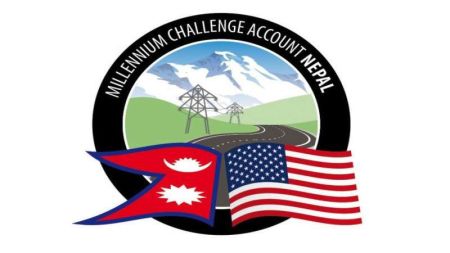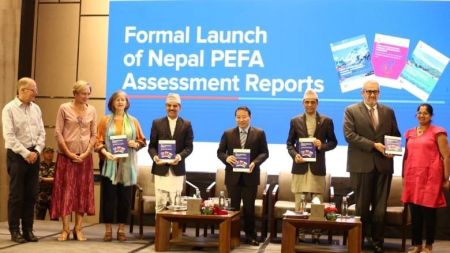BY Dr Prathiva Pandey
Nepal, adorned with the majestic Himalayas, has captivated the hearts of adventurers, culture enthusiasts, pilgrims, and wildlife lovers worldwide. Its spiritual sanctuaries, rugged landscapes, and vibrant cities make it a coveted destination. However, amidst this breathtaking beauty lies a lesser-explored narrative – the health problems and challenges faced by visitors during their journeys. Studies have revealed an increase in transmitted diseases among travellers during the spring compared to other seasons.
The Pioneering Work of CIWEC Clinic
Against this backdrop, the CIWEC Clinic shines as a beacon of hope and health. Established in 1982 with the mission to provide medical care to expatriates of the Canadian International Water and Energy Consultants (CIWEC) project, CIWEC Clinic rapidly evolved into a go-to place for travellers' healthcare needs. This clinic, over time, transformed into a hospital, becoming the world's pioneer in destination travel medicine, serving not only expatriates and travellers but also the local population.
In 1998, the CIWEC Clinic embarked on a groundbreaking journey by collaborating with GeoSentinel, a global sentinel surveillance system monitoring health issues among international travellers and migrants. This alliance between the International Society of Travel Medicine and the Centers for Disease Control and Prevention (CDC) ushered in a new era of comprehensive understanding of travel-related health challenges. A study titled 'Health problems in travellers to Nepal visiting CIWEC clinic in Kathmandu — A GeoSentinel Analysis' by Prativa Pandey, Keun Lee, Bhawana Amatya, Kristina M. Angelo, David R. Shlim, and Holly Murphy sheds light on health issues faced by visitors in Nepal, their diagnoses, and recommendations.
The study compiled data from the GeoSentinel database at the Kathmandu site (CIWEC) spanning from January 1, 2009, to December 31, 2017. To facilitate the study, diagnostic codes were categorised based on specific physical examination systems such as cardiovascular, dermatologic, head/eyes/ears/nose/throat (HEENT), gastrointestinal (GI), genitourinary (GU), lymphatic, musculoskeletal, neurologic, pulmonary, and psychiatric systems. Two additional categories were established for systemic febrile syndromes and 'other' illnesses not fitting specific systems. When applicable, diagnoses were grouped based on associations with environmental hazards (like altitude-related illnesses), animal exposures, vector-borne diseases (VBDs), or vaccine-preventable diseases (VPDs).
The analysis consisted of 24,271 records (averaging 2,662 travellers annually) with 29,281 diagnosed conditions. The median age was 30 (range: 0–91), with 54% identifying as female. The main traveller categories were tourists (63%), business travellers (20%), and missionaries, volunteers, or humanitarian workers (14%). The median trip duration was 16 days. Hospitalisation affected 8%, leading to 6 deaths. Primary countries of origin included the United States (18%), United Kingdom (11%), Australia (8%), and Germany (6%). Prominent diagnostic categories included gastrointestinal (GI), pulmonary, dermatologic, head/eyes/ears/nose/throat (HEENT), neurologic, musculoskeletal, genitourinary (GU), and febrile syndromes.
Common Ailments Among Visitors
The study revealed that nearly one-third of illnesses among travellers to Nepal were related to the gastrointestinal (GI) system. Acute diarrhoea was the most frequent diagnosis (72%), followed by acute gastroenteritis (7%). Less common were Giardia (5%), Cyclospora, Entamoeba histolytica, and Cryptosporidium infections. Liver abscesses were also documented.
In travellers under 18 (2,340 cases), GI diagnoses constituted 35% of all conditions, with 63% being acute diarrhoea. Cyclospora cases numbered 191, occurring mainly from May to August, totaling between 9 and 38 cases annually. Among Cyclospora cases, 60% were female. Respiratory issues mainly included upper respiratory infections (42%) and acute bronchitis (25%). Conditions like high altitude pulmonary edema (19%), lobar pneumonia (6%), and bronchospasm (5%) were less frequent. Skin and soft tissue infections, such as cellulitis and abscesses, accounted for 38% of this category, with a 50% rate of Methicillin-resistant Staphylococcus aureus (MRSA).
Neurological diagnoses primarily centred on high altitude cerebral edema (HACE). Trauma-related musculoskeletal diagnoses comprised 32% sprains or strains, 22% fractures, and 4% tendinitis. Genitourinary (GU) diagnoses primarily included urinary tract infections (UTIs) (507; 50%). Febrile illnesses were mainly viral (46%) or undiagnosed (15%), with influenza A (16%) as the leading cause of fever.
Of the 2,564 travellers with altitude-related diagnoses, the median age was 47; 99% travelled for tourism, with 50% experiencing acute mountain sickness (AMS) and the remainder facing severe high altitude illnesses. Among 446 rabies post-exposure prophylaxis cases, the median age was 22, 305 were due to dog bites and 99 due to monkey bites. Among the 64 with vector-borne illnesses, 41 had dengue fever (17% locally acquired), and nine had malaria.
Gastrointestinal problems, particularly acute diarrhoea, emerged as the chief reasons for seeking medical care at CIWEC during visits to Nepal. Parasitic pathogens like giardiasis and cyclosporiasis were notably prevalent among travellers, possibly due to the seasonal presence of the coccidian parasite from May to September. Enteric fever remained a significant concern, complicated by increasing drug resistance. The effectiveness of the typhoid vaccine in travellers versus the local population emphasised the role of safe practices in conjunction with vaccination.
Altitude-related illnesses continued to pose challenges for trekkers, with half of the altitude illness cases classified as severe. This highlighted the necessity for greater awareness and preparedness. Frostbite incidents primarily affected tourists from warmer climates, underscoring the need for pre-travel education on frostbite prevention.
Animal exposures, especially bites, required rabies post-exposure prophylaxis. As rabies vaccines gained popularity, the availability of intradermal rabies vaccines showed promise for broader use. While vector-borne diseases were relatively low among travellers, instances like the 2019 dengue outbreak in the Kathmandu Valley pointed to an evolving landscape.
Despite the study's comprehensive nature, it had limitations. Non-population-based data prevented rate and risk determination, while gaps in vaccination history and variations in diagnostic classifications tempered findings. Nonetheless, the analysis offered an insightful understanding of the health challenges faced by travellers in Nepal, stressing the need for enhanced pre-travel education and preventive measures.
Recommendations for Safer Travel
When travelling to Nepal, individuals must be aware of potential infectious diseases and health conditions they might encounter. Pre-travel preparation plays a pivotal role in ensuring a safe trip. This entails consulting a healthcare professional who can administer necessary vaccinations and provide guidance tailored to the traveller's specific itinerary.
Recommendations should include educating travellers about preventing and managing traveller's diarrhoea, offering insights into recognizing, preventing, and treating altitude sickness, providing instructions on avoiding animal exposures, and emphasising the importance of pre-exposure and post-exposure prophylaxis (PrEP and PEP) for rabies. Additionally, travellers should be informed about protecting themselves from insect and arthropod bites, along with awareness of available vaccinations for such threats.
(Dr. Pandey is MD at CIWEC Hospital & Travel Medicine Centre)






















